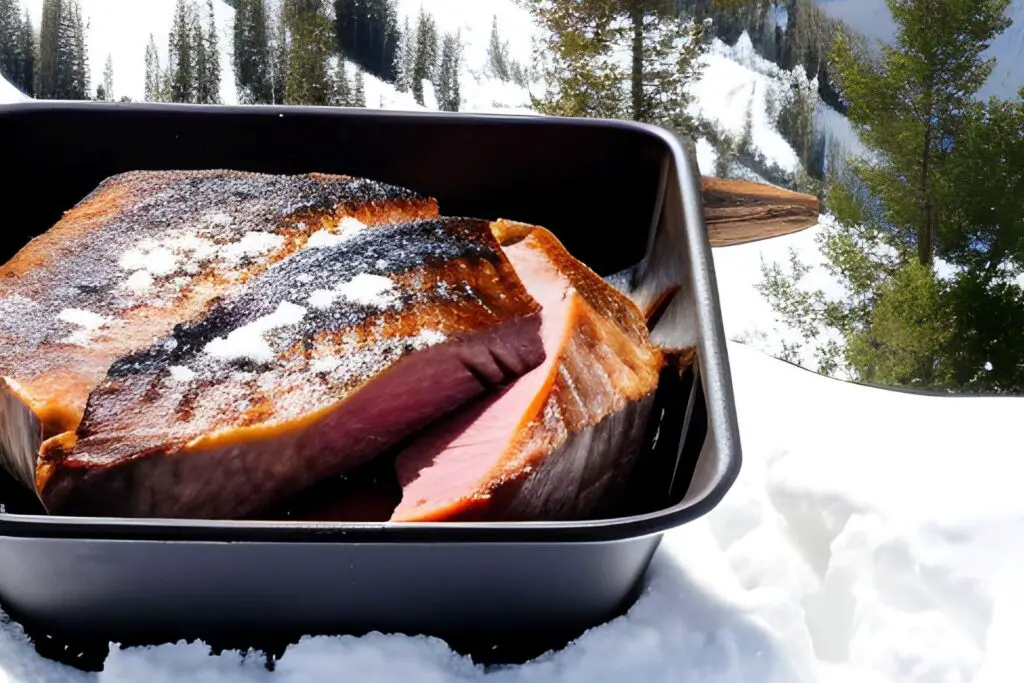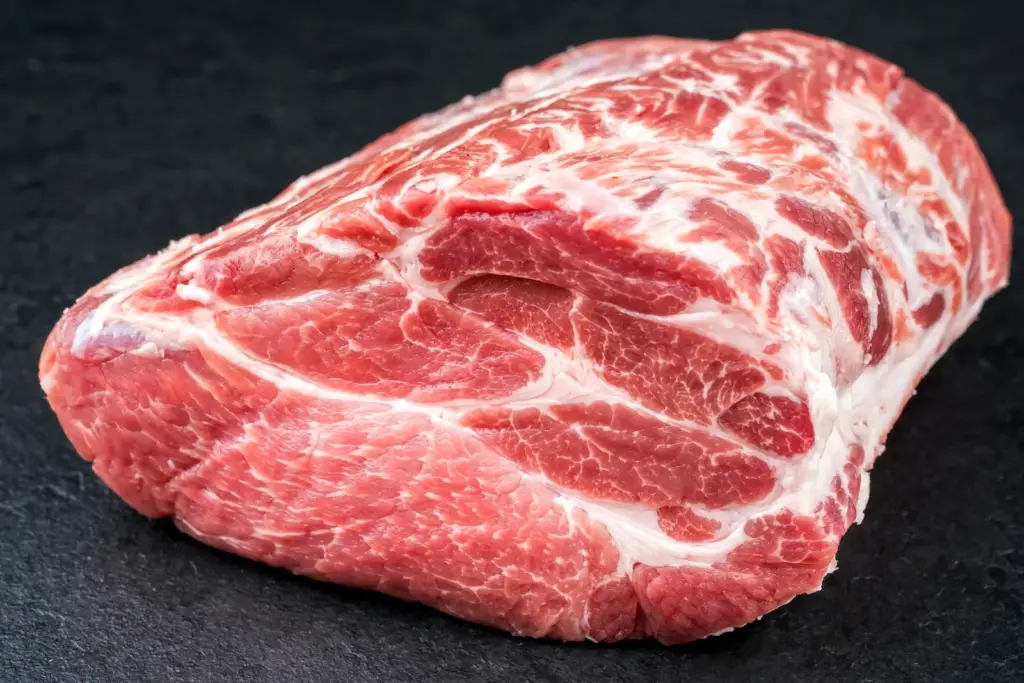
Filet mignon, often regarded as the epitome of luxury and tenderness, is a prime cut of beef known for its exceptional flavor and buttery texture. This elegant and succulent steak is a true indulgence, making it a popular choice for special occasions or romantic dinners. However, if you happen to have extra filet mignon or want to stock up on this premium cut for future enjoyment, freezing is a fantastic option. Freezing filet mignon allows you to extend its shelf life while preserving its superior quality and taste. In this guide, we will explore the best practices for freezing filet mignon, including proper packaging, storage techniques, and thawing instructions, so you can relish the taste of this exquisite steak whenever you desire. Join us as we uncover the secrets of freezing filet mignon and embrace the convenience of having this culinary masterpiece readily available, ensuring that every meal is a gourmet experience.
Here are the simple steps to freeze filet mignon:
Step 1: Select Fresh Filet Mignon
Choosing fresh and high-quality filet mignon is crucial to ensure the best results when freezing. Here’s why this step is important:
- Quality: Opting for high-quality filet mignon will guarantee a more flavorful and tender steak after freezing and thawing. Fresh filet mignon should have vibrant, bright red coloration, indicating that it is in its prime condition.
- Texture: The texture of filet mignon is an essential factor in its overall enjoyment. When selecting filet mignon, look for cuts that are firm to the touch. The meat should feel springy and resilient, indicating its tenderness.
- Minimal visible fat: Filet mignon is known for its lean and tender characteristics. To maintain its desirable qualities during freezing, it’s best to choose cuts with minimal visible fat. Excessive fat can affect the taste and texture of the meat when it is frozen and thawed.
- Source: Buying filet mignon from a reputable butcher or grocery store ensures that you are getting a quality product. Trusted sources often prioritize freshness and proper handling of the meat, reducing the risk of contamination or spoilage.
By selecting fresh filet mignon, you set the foundation for a delicious and enjoyable steak even after freezing. Remember to pay attention to its color, texture, and fat content to ensure the best possible outcome when it comes time to thaw and cook your filet mignon.
Step 2: Wrap the Filet Mignon
Wrapping the filet mignon properly is essential to protect it from freezer burn and maintain its quality during freezing. Here’s why this step is important:
- Freezer burn prevention: Freezer burn occurs when moisture is lost from the surface of the meat, leading to dry and discolored patches. By tightly wrapping each steak individually in plastic wrap, you create a barrier that helps prevent air and moisture from reaching the meat. This significantly reduces the risk of freezer burn and ensures that the filet mignon remains in optimal condition.
- Preservation of texture and flavor: Properly wrapped filet mignon retains its natural moisture, texture, and flavor. The plastic wrap helps to seal in the juices and prevent the meat from drying out. This ensures that when you eventually thaw and cook the steak, it will be as tender and flavorful as possible.
- Individual wrapping: Wrapping each filet mignon steak individually has several benefits. It allows you to easily take out only the desired number of steaks without having to thaw the entire package. It also prevents the steaks from sticking together during freezing, making it easier to handle and portion them when needed.
- Complete coverage: It is crucial to ensure that all sides of the filet mignon are completely covered with plastic wrap. This helps create an airtight seal and prevents any exposure to air, which can lead to freezer burn or degradation of the meat’s quality.
By tightly wrapping each filet mignon steak individually in plastic wrap and ensuring complete coverage, you provide a protective barrier that maintains the steak’s moisture, texture, and flavor throughout the freezing process. This step is vital in preserving the quality of the filet mignon until you’re ready to enjoy it.
Step 3: Place the Wrapped Filet Mignon in a Freezer Bag
Once you have individually wrapped each filet mignon steak in plastic wrap, it’s important to transfer them to a freezer bag for additional protection. Here’s why this step is important:
- Enhanced protection: Placing the wrapped filet mignon steaks in a freezer bag provides an extra layer of insulation and protection against freezer burn. The bag acts as a barrier, preventing air and moisture from reaching the meat and helping to maintain its quality.
- Air removal: Squeezing out excess air from the freezer bag before sealing it is crucial in minimizing the risk of freezer burn. Air contains moisture, which can lead to the formation of ice crystals on the meat’s surface. By removing as much air as possible, you create a more favorable environment for freezing, reducing the chances of freezer burn and maintaining the integrity of the filet mignon.
- Organization and space efficiency: Placing the individually wrapped filet mignon steaks in a freezer bag helps keep them organized and prevents them from getting lost or separated in the freezer. It also maximizes the use of freezer space by neatly containing the steaks in a compact package.
- Easy retrieval: Storing the filet mignon steaks in a freezer bag makes it convenient to take out the desired number of steaks without disturbing the rest. This way, you can thaw only the portions you need while keeping the remaining steaks frozen for later use.
By placing the individually wrapped filet mignon steaks in a freezer bag, removing excess air, and sealing it tightly, you create a protective environment that minimizes the risk of freezer burn and allows for efficient storage and retrieval. This step helps preserve the quality of the filet mignon until you’re ready to thaw and cook it.
Step 4: Label and Date
After placing the wrapped filet mignon steaks in the freezer bag, it’s important to label and date the bag for proper organization and tracking. Here’s why this step is important:
- Storage time tracking: By labeling the freezer bag with the date of freezing, you establish a reference point to track the storage time of the filet mignon. This is crucial because frozen foods have recommended storage times to maintain their quality and safety. Keeping track of the date allows you to know how long the filet mignon has been frozen and helps you prioritize its use accordingly.
- Rotation and freshness: Labeling and dating the freezer bag enables you to practice proper food rotation. When you have multiple packages of frozen filet mignon, you can easily identify the oldest ones and ensure they are used first. This helps prevent the filet mignon from staying in the freezer for too long, ensuring that you consume it while it’s still at its best quality.
- Planning and inventory management: By knowing the freezing date, you can plan meals and manage your inventory effectively. This way, you can incorporate the frozen filet mignon into your meal planning and ensure that you always have a variety of options available.
- Quality assurance: The date on the freezer bag serves as a reminder to use the filet mignon within the recommended time frame. Over time, frozen foods may start to deteriorate in quality, even if they remain safe to eat. By being aware of the freezing date, you can prioritize consuming the filet mignon while it still retains its optimal flavor and texture.
By using a permanent marker to label and date the freezer bag, you establish a system that helps you track storage time, practice proper rotation, and ensure the highest quality of the filet mignon when you eventually thaw and cook it.
Step 5: Place the Freezer
Once you have properly labeled and dated the freezer bag containing the wrapped filet mignon, it’s time to store it in the freezer. Here’s why this step is important:
- Consistent freezing temperature: Placing the freezer bag in the coldest part of your freezer helps ensure a consistent and stable freezing temperature. The coldest part of the freezer is usually towards the back or bottom. A consistent freezing temperature is crucial for preserving the quality of the filet mignon. Fluctuating temperatures can lead to the formation of large ice crystals or uneven freezing, which can affect the texture and taste of the meat.
- Food safety: Freezing the filet mignon at a sufficiently low temperature helps inhibit the growth of harmful bacteria. The freezing process slows down the microbial activity and helps maintain the safety of the meat. Storing the freezer bag in the coldest part of the freezer helps ensure that the filet mignon remains in a safe temperature range throughout the freezing period.
- Avoidance of temperature fluctuations: Placing the freezer bag in the coldest part of the freezer also reduces the chances of temperature fluctuations caused by frequent door opening or warm air from other items. Minimizing temperature fluctuations helps maintain the integrity of the filet mignon and preserves its quality.
- Efficient use of freezer space: By strategically placing the freezer bag in the coldest part of the freezer, you can make the most of your freezer space. This allows for better organization and utilization of the available storage area, ensuring that the filet mignon is stored properly without overcrowding or compromising the freezing process.
By placing the freezer bag in the coldest part of your freezer, you create the optimal environment for freezing the filet mignon. This ensures consistent temperatures, enhances food safety, and maintains the best quality of the meat until you’re ready to thaw and cook it.
Step 6: Store in the Freezer
When freezing filet mignon, it’s important to note the recommended storage time to maintain its quality. Here’s why this step is important:
- Quality preservation: Filet mignon can be stored in the freezer for up to three months without experiencing a significant loss in quality. During this time, the meat retains its flavor, texture, and overall appeal. Properly frozen and stored filet mignon will still provide an enjoyable eating experience after thawing and cooking.
- Prevention of freezer burn: Freezer burn can occur when frozen food is exposed to air, resulting in dry and discolored patches. While tightly wrapping and sealing the filet mignon helps prevent freezer burn, it’s still important to consume the meat within the recommended storage time to minimize the risk. Beyond three months, the filet mignon becomes more susceptible to developing freezer burn, which can negatively affect its taste and texture.
- Recommended guidelines: The three-month storage recommendation is based on maintaining the highest quality of the filet mignon. While the meat may still be safe to consume after three months, its taste and texture may deteriorate over time. Adhering to the recommended storage time ensures that you enjoy the filet mignon at its best.
- Rotation and freshness: By being aware of the storage time, you can practice proper rotation and ensure that you consume the oldest filet mignon first. This helps prevent the meat from staying in the freezer for too long, allowing you to maintain a fresh supply and enjoy the best quality filet mignon.
It’s important to note that freezing times may vary depending on factors such as freezer temperature and the initial quality of the filet mignon. Always use your best judgment and rely on sensory indicators such as color, texture, and smell to determine if the frozen filet mignon is still suitable for consumption.
How long can filet mignon last in the freezer?
Filet mignon can last in the freezer for up to three months without significant quality loss. Beyond that time, the meat may develop freezer burn and start to lose its desirable taste and texture. Proper storage and adherence to recommended storage times are essential to maintain the optimal quality of frozen filet mignon.
Step 7: Thaw the Frozen Filet Mignon
Thawing frozen filet mignon properly is crucial to preserve its texture, flavor, and overall quality. Here’s why this step is important:
- Preserve tenderness and juiciness: Thawing filet mignon slowly and gradually helps maintain its tenderness and juiciness. By transferring the frozen steak from the freezer to the refrigerator, the meat thaws at a controlled temperature. This gentle thawing process prevents the rapid temperature change that can affect the texture of the meat, ensuring that it remains tender and moist.
- Even thawing: Thawing filet mignon in the refrigerator allows for even thawing throughout the steak. This is important to ensure that the entire piece of meat thaws at a consistent rate, avoiding any partially frozen or partially thawed areas. Even thawing promotes uniform cooking and enhances the overall eating experience.
- Food safety: Thawing filet mignon in the refrigerator is the safest method as it keeps the meat within the recommended temperature range. This minimizes the risk of bacterial growth, ensuring that the filet mignon remains safe to eat.
- Convenience: Thawing filet mignon in the refrigerator overnight provides convenience as it requires minimal effort and allows you to plan ahead. By thawing the meat overnight, it will be ready to cook when you need it, saving you time and ensuring a smoother meal preparation process.
By thawing frozen filet mignon in the refrigerator overnight, you ensure that the meat thaws slowly and evenly, preserving its tenderness, juiciness, and overall quality. This method prioritizes food safety and convenience, allowing you to enjoy the best results when it comes time to cook your filet mignon.
Other related questions
Can you refreeze filet mignon?
It is generally not recommended to refreeze filet mignon once it has been thawed. Thawing and refreezing can negatively impact the quality, taste, and texture of the meat. It is best to plan ahead and only thaw the amount of filet mignon you intend to use to avoid the need for refreezing.
How do I know if the filet mignon has gone bad after being frozen?
To determine if frozen filet mignon has gone bad, check for signs of freezer burn, such as dry, discolored, or shriveled areas on the meat’s surface. A strong, off-putting odor or an unusual texture, such as sliminess or excessive dryness, can also indicate spoilage. If you notice any of these signs, it’s best to discard the filet mignon to ensure food safety and avoid consuming potentially spoiled meat.
Can I freeze filet mignon that has been aged or dry-aged?
Yes, you can freeze filet mignon that has been aged or dry-aged. Aged or dry-aged filet mignon can still be frozen successfully, preserving its flavor and tenderness. However, keep in mind that the aging process can intensify the flavors, so the taste may be slightly more pronounced after freezing and thawing. To freeze aged or dry-aged filet mignon, ensure it is properly wrapped to prevent freezer burn. Thaw the frozen filet mignon in the refrigerator overnight before cooking it to your desired doneness.
Can I freeze filet mignon with butter or herb compound?
Yes, you can freeze filet mignon with butter or herb compound. The butter or herb compound can add flavor and richness to the filet mignon when cooked. To freeze filet mignon with butter or herb compound, make sure the butter or compound is well incorporated into the meat.
Are there any alternative methods or recipes for freezing filet mignon?
There are alternative methods and recipes for freezing filet mignon. One option is to marinate the filet mignon before freezing to enhance its flavor. Another alternative is to pre-cook the filet mignon to a desired level of doneness and then freeze it. This method allows for quicker reheating later. Additionally, you can slice the cooked filet mignon and use it in various recipes like salads, sandwiches, or stir-fries before freezing. These alternative methods and recipes offer versatility and convenience when freezing filet mignon.
Is it possible to freeze filet mignon with bones?
Yes, it is possible to freeze filet mignon with bones. However, it is recommended to remove the bones before freezing for better preservation and to save space in the freezer. If you prefer to freeze filet mignon with bones, ensure it is wrapped tightly in freezer-safe packaging to prevent freezer burn and maintain its quality. Thaw the frozen filet mignon in the refrigerator before cooking for the best results.








